When Skill Became Obsolete: Art, Code, and the End of the Amateur
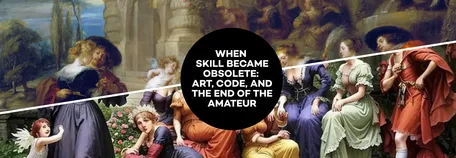
That which withers in the age of mechanical reproduction is the aura of the work of art.
Introduction
Historically, the term “amateur” referred to a non-professional lover of the arts, someone who pursued artistic activities out of passion rather than for economic gain. In an era when the boundaries between professional artists and cultivated laypersons were still fluid, amateurs could participate meaningfully in the cultural sphere and earn recognition for their work (Goethe & Schiller 1799).
This fragile balance began to shift in the nineteenth century, when the invention of photography and the emergence of modernism redefined the role of painting and displaced traditional craftsmanship in favor of conceptual innovation (Benjamin 1936).
Today, a parallel transformation is unfolding in software development: the automation of programming by large language models (LLMs) is once again moving value away from technical mastery toward creativity, abstraction, and design.
The Amateur in Classical Art
In the eighteenth and early nineteenth centuries, the amateur was regarded as a respected connoisseur and lover of the arts. Derived from the Latin amator (lover), the term “amateur” referred to individuals who engaged in artistic pursuits out of passion rather than professional ambition or economic necessity. At a time when the division between professional artists and cultivated amateurs was less rigid than today, amateurs could gain serious recognition for their contributions to cultural life (Goethe & Schiller 1799).
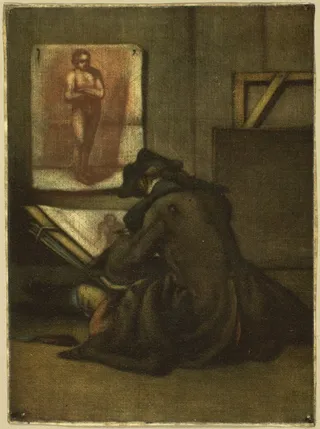
Technical skill was the primary criterion for evaluating artistic work during this period. Craftsmanship was seen as tangible proof of both the artist’s seriousness and the quality of their work. Particularly in fields such as portrait painting, landscape painting, and music, the precision of execution, composition, and mastery of material were essential to artistic value. This emphasis on technical proficiency enabled amateurs to be acknowledged, provided they demonstrated a high level of skill (Rebentisch 2017, p. 26ff.).
Moreover, even within the sphere of professional art, the production process was often collaborative. In many prominent workshops, especially during the Dutch Golden Age, masters such as Rembrandt or Rubens supervised large studios where assistants and pupils contributed to the production of artworks. Often, the master would create the compositional sketch or focal figures, while background elements and secondary details were executed by apprentices. As a result, the boundaries between individual authorship and collective creation were frequently blurred, and attributions remain uncertain to this day. This early form of division of labor in the arts reveals a tension between the singular “artistic genius” and the collaborative production process.
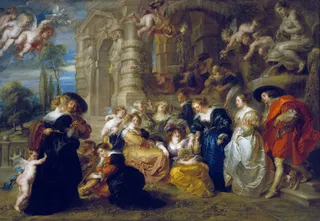
From a social perspective, amateur artistry fulfilled a dual function. On the one hand, it served to demonstrate education and cultivated leisure, particularly within the rising bourgeoisie. Artistic practice became an expression of comprehensive personal development, as formulated by thinkers such as Wilhelm von Humboldt. On the other hand, amateurs played an important role in disseminating artistic practices beyond professional circles: private musical performances, drawing salons, and the publication of poetry collections by non-professionals contributed significantly to the formation of a broader cultural public (Bourdieu 1992).
Only with the increasing professionalization of the art world in the course of the nineteenth century—and the institutionalization of specialized training programs—did the separation between the professional artist and the amateur become more pronounced. In the classical art world of the eighteenth century, however, the amateur remained a recognized figure, judged primarily by the standard of technical mastery rather than by innovation or theoretical discourse.
The Invention of Photography and Its Consequences
The invention of photography in the early nineteenth century marked a profound turning point in the history of the visual arts. With the ability to create precise representations of reality through technical means, painting lost its central role as the primary medium for realistic depiction. Portrait painting in particular, which had served important social functions in both aristocratic and bourgeois contexts, found itself facing technological competition that was faster, more affordable, and more objective (Benjamin 1936).
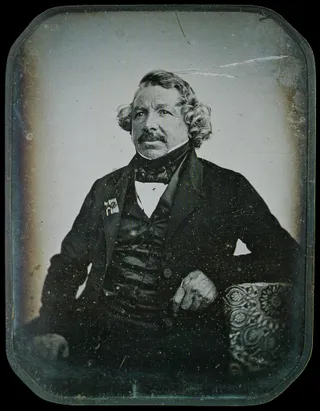
This new competition forced painting to redefine its role. Rather than continuing to serve primarily as a medium for faithful reproduction, artists began to explore subjective perceptions, emotional atmospheres, and experimental forms of representation. Movements such as Impressionism, Expressionism, and later Abstract Art emerged as direct responses to these challenges. Consequently, technical mastery—control of perspective, anatomy, and light—gradually gave way to conceptual considerations and personal expression.
Artistic work is no longer judged solely by the mastery of a medium, but by its capacity to articulate a critical stance within a conceptual framework.
Painting survived this crisis by emancipating itself from its traditional mimetic functions and establishing new values: innovation, authenticity, and subjectivity. Thus, artistic evaluation shifted from the mastery of established techniques to the originality of ideas and the distinctiveness of individual style.
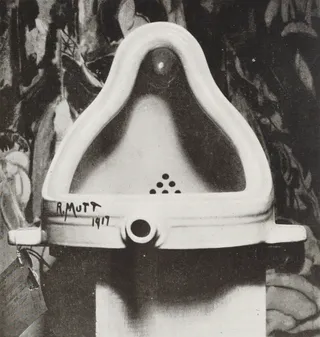
The transformation of painting in response to technological innovation illustrates a broader dynamic: when a technical function can be automated or reproduced more efficiently by new media, the focus of human creative work tends to shift toward areas where intuition, conceptual thinking, and innovation cannot easily be mechanized. This historical development provides an important framework for understanding contemporary shifts in other fields, particularly the impact of automation on programming and software development.
Parallels to Programming
The historical trajectory observed in the visual arts—where technological innovation displaced traditional craftsmanship and redirected human creativity toward conceptual domains—finds a striking parallel in the contemporary field of software development. For much of its history, programming has been regarded primarily as a craft: a discipline requiring meticulous technical skill, mastery of complex systems, and a deep understanding of abstract logic. The programmer was seen as a kind of artisan, comparable to the classical painter or composer, whose expertise was rooted in extensive, often arduous, training and practice.
However, as in the case of the arts, programming has always contained an element of division of labor. In large-scale software projects, it became increasingly common to distinguish between developers responsible for the detailed implementation of code and software architects who conceived the overarching system design. While the architects formulated high-level solutions and conceptual frameworks, developers executed the technical realization, similar to how apprentices in a painter’s workshop contributed to the realization of a master’s vision.
From Craft to Concept: The Changing Role of the Programmer
Recent advances in artificial intelligence, particularly the rise of large language models (LLMs), are now disrupting this traditional model. Tasks that once demanded considerable technical effort—such as writing boilerplate code, debugging, or even generating complex algorithmic solutions—can now be performed, or at least significantly accelerated, by AI systems. The routine, repetitive aspects of programming are thus increasingly subject to automation, much like realistic portraiture was once superseded by the camera.
This development is transforming the role of the human programmer. Mere technical execution is no longer sufficient to secure a professional identity. Instead, greater emphasis is placed on skills that machines cannot easily replicate: the ability to formulate meaningful problems, design robust and flexible architectures, and devise creative, context-sensitive solutions. In this emerging landscape, the programmer must increasingly act as a conceptual thinker, strategist, and innovator—rather than merely as a craftsman.
Mere technical execution is no longer sufficient to secure a professional identity.
The social consequences of this shift mirror those observed in the historical transformation of the art world. Just as technical proficiency alone ceased to guarantee artistic recognition in the modern era, technical coding skills alone may soon no longer guarantee professional success. Instead, recognition and value will increasingly depend on an individual’s capacity for abstraction, critical thinking, and creative synthesis.
For decades, programmers have enjoyed an elevated social status. They have been celebrated as the architects of the digital future, commanding high salaries and cultivating a professional identity marked by exclusivity and self-confidence. Yet with the rise of artificial intelligence capable of automating significant portions of coding work, this self-image is undergoing a dramatic destabilization.
Whereas previous waves of digitalization primarily affected external fields—such as retail, logistics, or administrative work—today it is the very agents of digitalization who find their own roles threatened. Programmers, once the initiators of disruption, are now themselves subject to it. This inversion marks a profound psychological shift: professions once believed to be immune to automation must now confront their own obsolescence.
Conclusion
The trajectory from the disappearance of the amateur in classical art to the current transformations in programming reveals a striking historical continuity: technological innovation repeatedly displaces traditional craftsmanship, forcing human creativity to migrate into conceptual and strategic domains.
In the arts, the invention of photography precipitated a crisis of representation that ultimately redefined artistic value, shifting emphasis from technical execution to originality, expression, and theoretical engagement. Similarly, in software development today, the rise of artificial intelligence is automating many routine programming tasks and challenging the established identity of programmers as technical artisans. The human contribution is increasingly concentrated on areas that demand abstraction, critical thinking, and creative problem-solving.
This shift is not merely technical or economic but profoundly social and psychological. The destabilization of traditional professional identities—particularly among programmers who once stood at the forefront of digital disruption—illustrates the broader societal implications of automation. As expertise is redefined and new hierarchies emerge, individuals and institutions alike must rethink the nature of work, creativity, and human agency in an increasingly automated environment.
Resource List
Benjamin, Walter. “The Work of Art in the Age of Mechanical Reproduction.” 1936. In Illuminations, edited by Hannah Arendt and translated by Harry Zohn, 217–251. New York: Schocken Books, 1968.
Bourdieu, Pierre. The Rules of Art: Genesis and Structure of the Literary Field. Translated by Susan Emanuel. Stanford, CA: Stanford University Press, 1996. (Original French edition 1992).
Goethe, Johann Wolfgang von, and Friedrich Schiller. Correspondence, 1794–1805. Edited by Karl Heinemann. Berlin: Aufbau Verlag, 1980. (Letters dated 1799 cited in text).
Rebentisch, Juliane. Theorien der Gegenwartskunst zur Einführung. 2nd revised ed. Hamburg: Junius, 2017.
Photos
Jean-Baptiste-Simeon Chardin, "The Young Draughtsman"
Peter Paul Rubens, “The Garden of Love”
Louis-Jacques-Mandé Daguerre (1844), photographed by Jean-Baptiste Sabatier-Blot
